A film-type heater is a heating device that distributes heat using infrared rays. The device looks like a thin film of different sizes with a heating element and a foil inside. According to the principle of execution, they are divided into: wall, ceiling and floor. Such a device is suitable for any room, as it can work even at a temperature of -30 degrees. The main advantage of such a heater is that it can be purchased not only in the form of a single-color film, but also to depict various illustrations on it that will complement the interior of any room.
Device and principle of operation
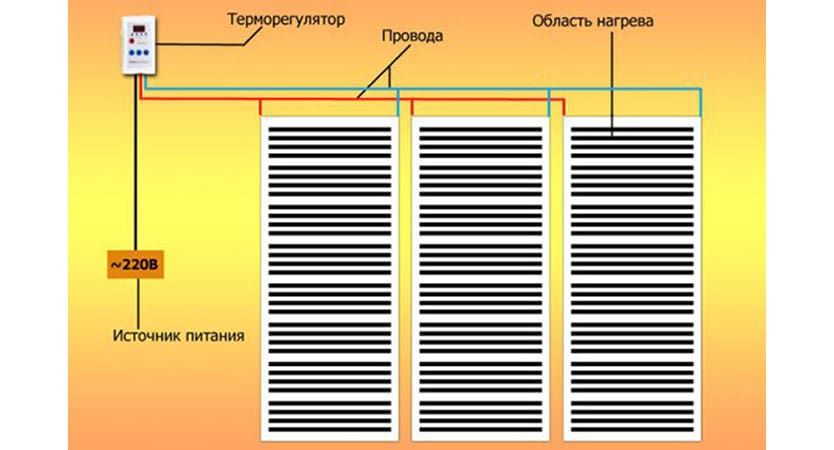
This heating device is made of two heat-resistant foils, between which a heating element is located. And also most models are equipped with a thermostat that allows you to control the temperature of the device and special sensors that will turn off the device if the preset temperature is reached in the room.
The principle of operation of heaters on infrared radiation is that infrared rays do not heat the air itself, but objects and surfaces with which they collide, and these objects, in turn, already distribute heat throughout the room. By the same principle, the sun warms the planet.
![]() See also - Infrared heaters are harmful or not
See also - Infrared heaters are harmful or not
Types of infrared film heaters
According to the installation method, a flexible film heater for a home can be floor, ceiling and wall. The latter type of heater is recommended to be used rather as a decoration or as an additional source of heat, rather than as a full-fledged heating device, since the radiated heat will quickly go to the ceiling, which is not very effective. Therefore, if you have to purchase a device specifically for heating a room, then you need to choose a ceiling or floor option.
Ceiling
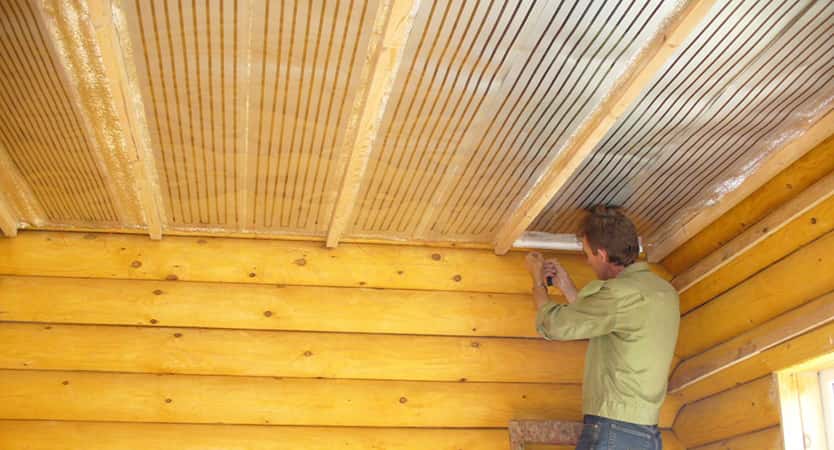
This type of film heater is most often chosen by buyers, since it distributes heat most efficiently throughout the room. This happens because infrared rays quickly reach the floor, give off heat to other objects and air, and then go up again, which gives the effect of volumetric heating. However, it is worth considering that despite all its advantages, if the ceilings in the room are higher than three meters, then the infrared rays will not be able to reach the floor, which, accordingly, makes it senseless to install it on the ceiling, and it is worth considering the floor option.
Floor
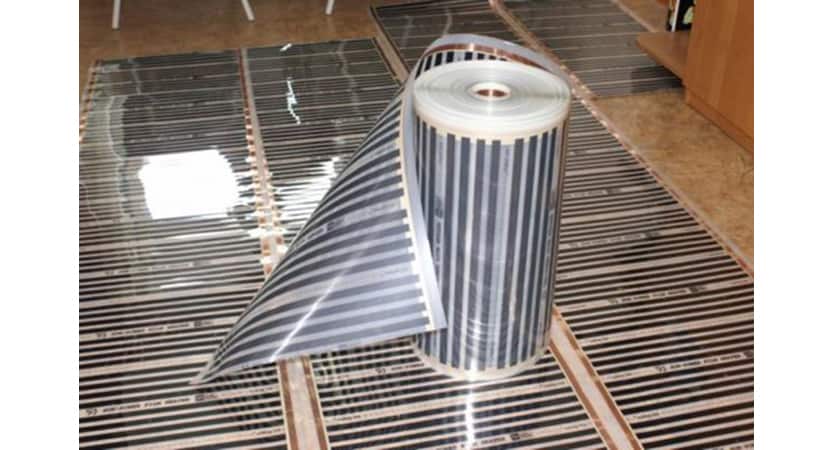
A floor-standing film heater has even more advantages over a ceiling-mounted type of such a device. The height of the ceiling is no longer important here, since few buyers are interested in a warm ceiling, but a warm floor always adds comfort to the room. But nevertheless, it is risky to put the film heater on the floor if you plan to furnish the room with too heavy furniture or appliances - there is a high risk of the device breaking under their weight.
![]() See also - How to connect a thermostat to an infrared heater
See also - How to connect a thermostat to an infrared heater
Advantages and disadvantages of infrared film heater
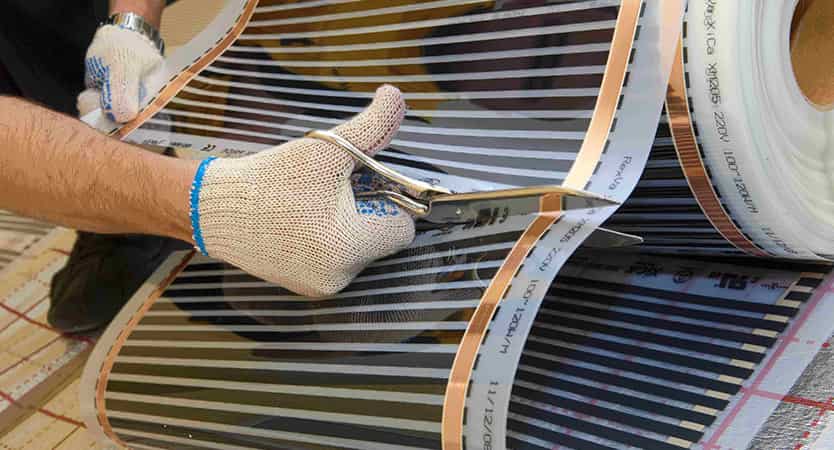
The main advantage of the film heater over other types of heating devices is that it does not heat up to high temperatures, therefore, there is no need to fear accidental burns or fires. Other benefits include:
- long service life;
- energy efficiency;
- ease of installation;
- noiselessness of work;
- made from environmentally friendly components;
- the device does not pollute or dry the air.
Customers also note that being under the infrared rays of a heater gives the same relaxing effect as being under the sun.
The device is still not perfect and has several disadvantages:
- the room will cool down quickly after turning off the device;
- not too strong heating - the room will be comfortable, but not warm;
- ceiling models can overheat household appliances;
- a wall heater is not effectively used as a full-fledged heating device.
![]() See also - How to choose the perfect air conditioner for your home and apartment
See also - How to choose the perfect air conditioner for your home and apartment
Installation of an infrared film heater
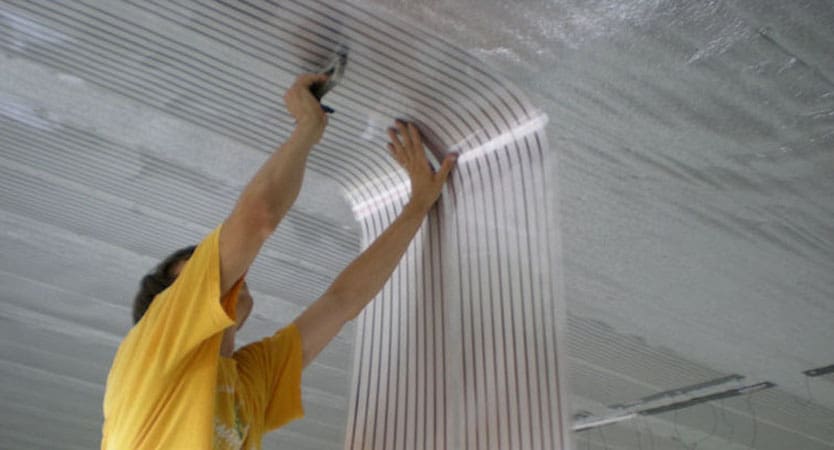
The film heater is installed in a slightly different way than other types of heating devices, however, this can be done independently, it is not necessary to resort to the help of specialists. The main thing is to remember that the heater cannot be turned on while the film is rolled up, the distance between the films should be no more than 4 mm and the film can only be cut along the lines left by the manufacturer. To install the heater, you must adhere to the following sequence of actions:
- Mounting the reflective screen.
- Installing the film.
- Sealing with aluminum adhesive foil.
- Installation of heating elements.
- Turning on the device.
And also, all manufacturers of film heaters prohibit fixing the device with nails and screws. You only need to fasten the device with a construction stapler.
See also:
- 12 best home heaters according to buyers' opinions
- The 18 best Timberk heaters of 2019
- 20 best Ballu heaters of 2019 according to customers
- 5 best Stiebel Eltron heaters of 2019
- 5 Best Digital Weather Stations for Home of 2019


